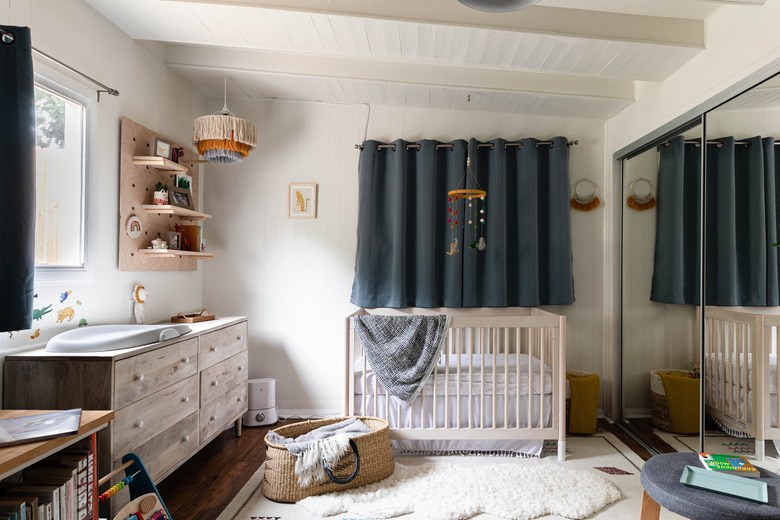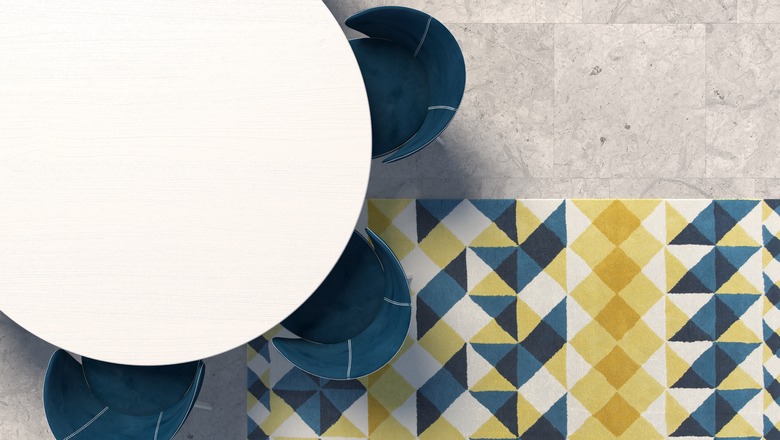How To Replace A Carpet Tile
Ordinarily, a guest dropping a glass of red wine or a lit cigarette onto your carpeting would force you to live with the damage or replace your entire carpet. Luckily, you wisely installed carpet tiles instead of a wall-to-wall disaster. You can simply remove the damaged carpet tiles and replace them with fresh ones.
This is an easy DIY project, but approach it with caution if your carpet tiles were glued in place. You may need to use some fairly potent chemicals to remove the old adhesive. If you have a glue-free system, you need not take any extra safety precautions.
Put Safety First
Put Safety First
Before you touch your carpet, take a minute to remember when you installed it. As the University of Connecticut points out, carpet-tile adhesive manufactured prior to 1980 may contain asbestos. If you suspect that your adhesive is old, have a professional asbestos company test it (or take a sample and send it to a testing lab yourself) before you proceed. They can tell you if asbestos is present and help you safely do something about it if necessary.
It's also important to grab some rubber gloves, safety goggles and a respirator before you begin pulling up any carpet squares. If you're lucky, the adhesive under your carpet will easily scrape away. If it doesn't, you may need to use chemicals to dissolve the old glue.
Acclimate Your Flooring
Acclimate Your Flooring
Many homeowners are unaware that carpet and other flooring materials need time to adjust to new environments. It's important that you bring your new carpet tiles into the room and keep them there for 24 to 48 hours before installing them. Doing so will help make your finished carpet repair look its best. Why?
The materials used to make carpet can expand or contract at certain temperatures and humidity levels. If your carpet tiles have expanded in storage, you'll have trouble getting the new carpet tile to fit in place. If it has contracted, the tile won't completely fill the old carpet tile's space, leaving an unsightly gap. Allowing the carpet to acclimate before you install it solves these problems so you can get a perfect fit.
Removing Carpet Tiles
Removing Carpet Tiles
The first step in replacing damaged carpet tiles is removing them. To do so, lift a corner of the tile and slowly begin to pull it away from the floor. If you can't grab hold of a tile corner, slide a putty or utility knife under one edge of the carpet and begin to lift it up. Sometimes, the tile will prove stubborn and cling to the floor quite tenaciously. If it does, keep working your putty knife between the tile and the floor until the carpet is free.
As the carpet tile comes free, it will likely leave behind some adhesive. You need to remove this so that the new modular carpet tile can form a strong bond with the subfloor. To begin, scrape away as much of the old adhesive as you can, pushing your putty knife away from you as you work. If the glue refuses to come free, try softening it with some hot water.
Getting Serious About Glue
Getting Serious About Glue
Sometimes, hot water and elbow grease aren't enough to remove stubborn tile adhesive. In fact — and perhaps counterintuitively — older carpet adhesive tends to cling worse than newer adhesive. If you're having trouble removing the old glue, visit your local hardware store and pick up a box of trisodium phosphate (TSP).
To use TSP, the chemical company Savogran recommends dissolving 1/2 cup of TSP into 2 gallons of hot water. Dip a scrub brush into your cleaning solution and use it to remove the old adhesive from the floor. Rinse the area thoroughly when you're done and avoid leaving puddles of TSP cleaner or water on your floor.
Be aware that TSP is effective but also toxic and harmful to the environment. Always wear long sleeves, rubber gloves, safety glasses and a respirator when using TSP. Make sure you ventilate your work area well and follow all of the manufacturer's instructions for both using and disposing of TSP. TSP will work wonders for removing carpet glue, but you need to use it responsibly and safely.
Placing the New Tile
Placing the New Tile
After you've cleaned the subfloor beneath your carpet tile, use a towel or wet/dry vacuum to dry the area completely. You're now ready to place your new tile on the floor but don't glue it down just yet.
When you place the tile, check the back of it for an arrow. Carpet squares with certain types of pile need to face the same direction, so make sure the arrow on the back of your tile points in the same direction as the rest of the floor if applicable. Examining the tile will ensure that you've kept true to any pattern on your floor, and you can properly cut any tiles that will sit against heating vents, door frames or other obstacles.
Once you've verified that your tile placement is correct, remove the protective paper from the back of the tile to expose the adhesive and secure the tile in place. If you're using carpet glue rather than self-adhesive carpet tiles, remember to apply the glue sparingly. Use only as much adhesive as you need to prevent sliding and buckling. Using too much adhesive makes it more difficult to replace the tile again if necessary.
Replacing Glue-Free Tiles
Replacing Glue-Free Tiles
Glue was once the only way to hold modular carpet tiles in place, but some newer floors offer a glue-free installation option. Instead of being adhered to the floor, these tiles use special adhesive patches to hold carpet tiles to each other. This floating installation allows you to place tiles without smearing any adhesive on your subfloor, making them a good way to protect hardwood and other finished floors.
Glue-free carpet tiles are often attached to each other at the corners. To remove the old tile, start lifting along the edge of the tile, starting in the middle and working your way out. When you get to the adhesive sticker between tiles, cut through it with a sharp carpet or utility knife. Don't try to pull the tiles apart using brute force, as this may damage them.
When you're ready to install the replacement carpet tile, place new adhesive squares on the back of the tile. Work the new tile into place, adhering it to the neighboring tiles for a secure fit.


